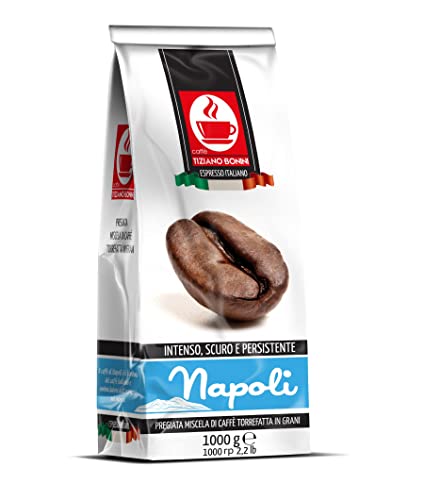What Are Coffee Beans?
The coffee beans you use to brew are actually the seeds of the fruit called a coffee cherry. The coffee plant is a perennial plant, which means that it comes back every year.
Coffee beans have high levels of certain compounds, such as caffeine, and therefore should be consumed in moderation. Learn more about this popular seed!
Origin
The seeds of the coffee plant are used to create coffee, a beverage that is brewed. The beans are one of the most coveted and lucrative commodities in the world. The coffee plants are evergreen, woody shrubs that thrive in tropical climates. Most of the world's coffee is grown in the Bean Belt, which includes the areas around the Tropic of Cancer and the Tropic of Capricorn.
The most famous origin story of coffee began in Ethiopia with a goatherder named Kaldi. He noticed that his animals became more active after eating the bright red berries of certain coffee plants. Kaldi shared his discovery with the abbot of a nearby monastery, who made a drink out of the berries. The energizing properties of the berries spread from there.
Presently, coffee beans are produced by two main varieties of Coffea plants: Arabica and Robusta. The latter is found primarily in Africa and Indonesia and is typically less expensive than arabica. There are many smaller varieties that are a mix of robusta and arabica. These beans are known as peaberries and have more flavor than standard beans.
When roasting beans lose their moisture, which can lead to them becoming stale and bitter. To avoid this, it is crucial to use only fresh, premium beans for your coffee.
Flavor
The four components of flavor- acidity, bitterness, saltiness, and sweetnessare influenced by beans' type, climate, and the method of processing. The level of these elements can create a wide range of flavor profiles, ranging from fruity and sweet to nutty or even smoky.
When coffee beans are heated they react with amino acids in their seeds to form hundreds of aromatic compounds that affect their flavor. This reaction is known as the Maillard Reaction, and it occurs in nearly all cooking. The result is that the flavor of roasted coffee is a reflection of these substances.
While the Maillard Reaction affects the overall flavor of the roast, nonvolatile as well as volatile compounds also contribute to the taste of coffee. The flavor of a fresh or unroasted bean could be earthy fruity, floral or even chocolaty. Bitterness is typically connected with roasts with a fuller flavor that contain more caffeine, however it can also be due to poor brewing methods or storage.
unroasted coffee beans are coated with flavor oils that help to preserve the beans, while also adding a specific aroma and taste. The flavor oils can be mixed with chemicals and natural flavors, including cinnamon, vanilla and chocolate. The flavors bind to the beans through the chemical compound polyphenol.
Health Benefits
Coffee beans are a great source of potassium, magnesium, and B vitamins. They are also a good source of antioxidants that help to prevent the effects of oxidative stress (which can lead to chronic diseases such as atherosclerosis and cancer). The antioxidant chlorogenic acid found in coffee beans is particularly effective against obesity-related illnesses, such as the high cholesterol level and diabetes.
Coffee is also an effective natural energy booster and helps people feel more energetic and alert. Caffeine stimulates neurochemicals that improves alertness, memory and cognitive performance. It also aids in controlling blood sugar levels. Drinking moderate amounts of coffee has been proven to lower the risk of Parkinson’s disease and dementia. It also boosts happiness, mood and energy levels as well as concentration.
Anti-aging: The antioxidants (including caffeine and the chlorogenic acids) in coffee serve as a natural moisturizer for the skin, increasing cell turnover to reduce wrinkles and fine lines. They also have UV-protection properties, blocking sunlight and preventing sun-induced skin damage.
Anti-depressant Coffee beans can be used as an anti-depressant which boosts dopamine and serotonin in the brain, which increases the level of happy hormones. It also eases inflammation and pain by acting as a natural painkiller and improving the effectiveness of prescription painkillers. Coffee also has cafestol and kahweol. These are diterpene esters that have lipolytic properties in the adipose layer, aiding in the fight against cellulite.
Caffeine

Coffee is a favored drink around the world. It has become a part of many morning routines. Coffee beans are the seeds of the coffee plant, or the coffee cherry. They are rich in caffeine, which is a natural stimulant. The caffeine content in coffee can vary depending on how it is roasted and prepared before being brewed. There are certain rules that can help you choose the best coffee.
The average coffee bean has around 2 milligrams caffeine per bean, however the exact amount can vary dependent on the size of the bean and the amount of roasting it has. There is a widespread belief that dark roasted beans contain more caffeine than light roasted ones but this isn't the reality. Dark roast coffee beans will contain less caffeine than light roasts because of their lower density. However the amount of caffeine is the same.
The recommended daily limit for caffeine is 400 milligrams. A typical cup of coffee has 95 milligrams. If you're not sensitive to caffeine staying within this range shouldn't cause any negative consequences. People who aren't sensitive to caffeine can enjoy their coffee, but it's important to be aware of how much caffeine you're taking in and be cautious about excessive consumption.
